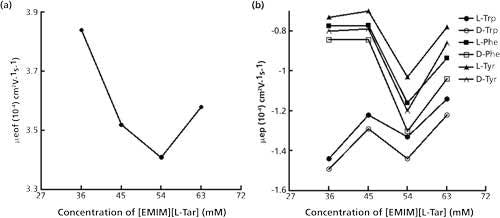Biochromatography Size-Exclusion and Ion-Exchange Techniques
LCGC North America
A summary of what these techniques can tell us from a qualitative and quantitative perspective
Biopharmaceutical compounds are genetically engineered from living cells and have molecular weights in the 2000–2,000,000 Da range with 10–2000 reactive groups and often comprise a mixture of closely related variants; therefore, there is a wider degree of variability (a degree of heterogeneity) in comparison to small-molecule pharmaceuticals. The combination of all of these factors makes biopharmaceutical compounds incredibly complex and presents unique analytical challenges in their separation and characterization.
Ion-Exchange Chromatography
Ion-exchange chromatography has been widely used in the analysis of biomolecules and remains one of the gold standard strategies for charge variant analysis. The most common causes of charge variants are deamidation, isomerization, succinimide formation, oxidation, silylation, N-terminal pyroglutamic acid, or C-terminal lysine clipping. Ion-exchange chromatography separates compounds based on the electrostatic interaction of the ionic groups on the protein surface or the monoclonal antibody (mAb) and the oppositely charged ionic group on the surface of the stationary phase. Cation-exchange columns have a negatively charged surface-these columns are used at pH values below the isoelectric point (pI, the pH at which the protein charges are balanced and the net surface charge is 0) of the peptide or protein. Conversely, anion-exchange columns have a positively charged stationary phase and are operated above the peptide or protein pI. The selection of the stationary phase and the mobile-phase pH strongly depends on the species being analyzed. The conditions have to be selected such that the protein and the stationary phase are in their charged forms.
Ion-exchange chromatography is of interest for the analysis of biomolecules as the separation is performed under nondenaturing conditions, unlike reversed-phase high performance liquid chromatography (HPLC). Elution of compounds is achieved by running a salt or pH gradient to interrupt the compound–stationary phase interactions.
Comparison of the elution order for salt and pH gradient experiments show that the mAb compounds are eluted in a similar order under both sets of conditions (1,2). The peak capacity (resolving power) for each method has also been calculated and was found to be higher under salt gradient conditions.
Cation-exchange chromatography is particularly suited to the analysis of mAbs because of their basic nature, and has been applied to the identification of post-translational modifications (3).
Size-Exclusion Chromatography
Size-exclusion chromatography (SEC) is used for separating and quantifying protein mixtures, which includes measuring aggregates (dimers, trimers, tetramers, and so on), separating low-molecular-weight excipients and impurities, and determining changes to the molecule such as clipping and other post-translational modifications. It is important to understand and be able to control aggregation in biomolecules because it will affect their efficacy and lifetime, and can produce an immunological response. In SEC there is no interaction between the analyte and the surface, and separation is primarily done by means of the degree of inclusion or exclusion from the pores within the stationary phase. The pores have different accessibility for molecules of different sizes (hydrodynamic volume)-large molecules are poorly retained and are eluted first as they cannot access the pores within the stationary phase, whereas smaller molecules will diffuse into the pores to a greater extent depending on their size and will be eluted later, with the smallest molecules eluted last. The “size” of the biomolecule depends on the molecular weight, degree of folding, and degree of hydration.
Several factors should be considered when selecting columns and conditions for SEC:
· The stationary phase should be as inert as possible and silica-based columns should be bonded with diol or a polymeric phase to prevent unwanted secondary interactions.
· The pore size should be selected to reflect the molecular weight range of the proteins being analyzed.
· Because all compounds are eluted before the column dead time (t0), SEC columns often have large internal diameters (~7 mm) and are relatively long (25–30 cm).
· Low mobile phase flow rates are used (0.5 mL/min) to generate a large t0.
· Mobile-phase components should not interact with the solute proteins.
· A pH 7 phosphate buffer is often selected because this pH is close to the pI of most proteins.
· Interactions between analytes and the column can be decreased by adjusting the salt concentration-a high salt concentration reduces protein–stationary phase interactions.
Separations can be optimized by adjusting mobile-phase ionic strength, pH, using organic solvents and temperature. Typically, SEC separations are carried out at 20–30 °C; however, separation of proteins and peptides may require higher temperatures to improve resolution and recovery. It should be noted that increases in pressure and temperature can lead to an increase in aggregation on the column, which can result in errors in quantitation.
References
- S. Fekete et al., Pharm. Biomed. Anal.102, 33–34 (2015).
- S. Fekete et al., Pharm. Biomed. Anal.102, 282–289 (2015).
- K. Sandra et al., J. Chromatogr. A1422, 27–33 (2013).
Get the full tutorial at www.CHROMacademy.com/Essentials (free until May 20).

New Study Reviews Chromatography Methods for Flavonoid Analysis
April 21st 2025Flavonoids are widely used metabolites that carry out various functions in different industries, such as food and cosmetics. Detecting, separating, and quantifying them in fruit species can be a complicated process.
Quantifying Terpenes in Hydrodistilled Cannabis sativa Essential Oil with GC-MS
April 21st 2025A recent study conducted at the University of Georgia, (Athens, Georgia) presented a validated method for quantifying 18 terpenes in Cannabis sativa essential oil, extracted via hydrodistillation. The method, utilizing gas chromatography–mass spectrometry (GC–MS) with selected ion monitoring (SIM), includes using internal standards (n-tridecane and octadecane) for accurate analysis, with key validation parameters—such as specificity, accuracy, precision, and detection limits—thoroughly assessed. LCGC International spoke to Noelle Joy of the University of Georgia, corresponding author of this paper discussing the method, about its creation and benefits it offers the analytical community.










